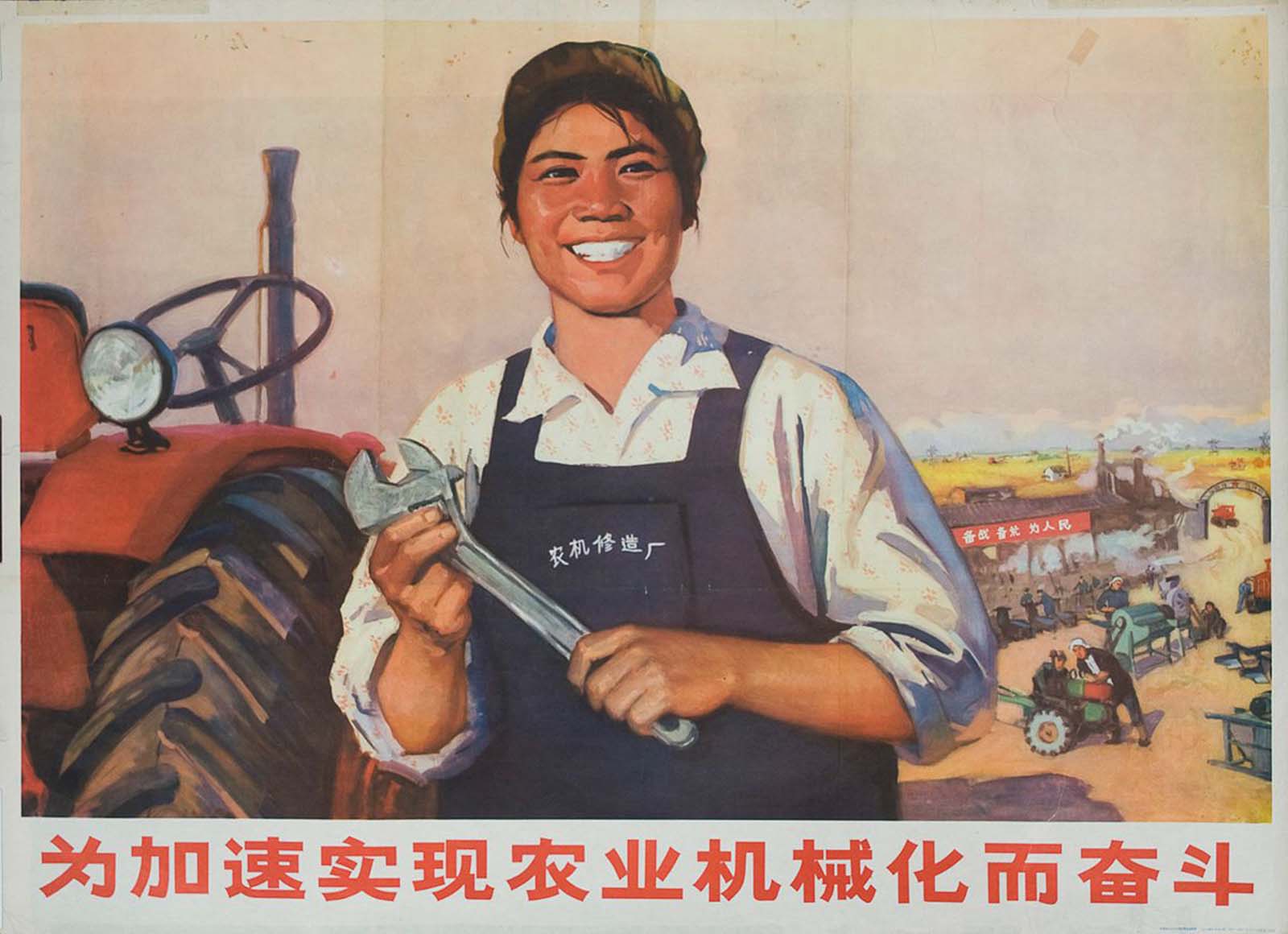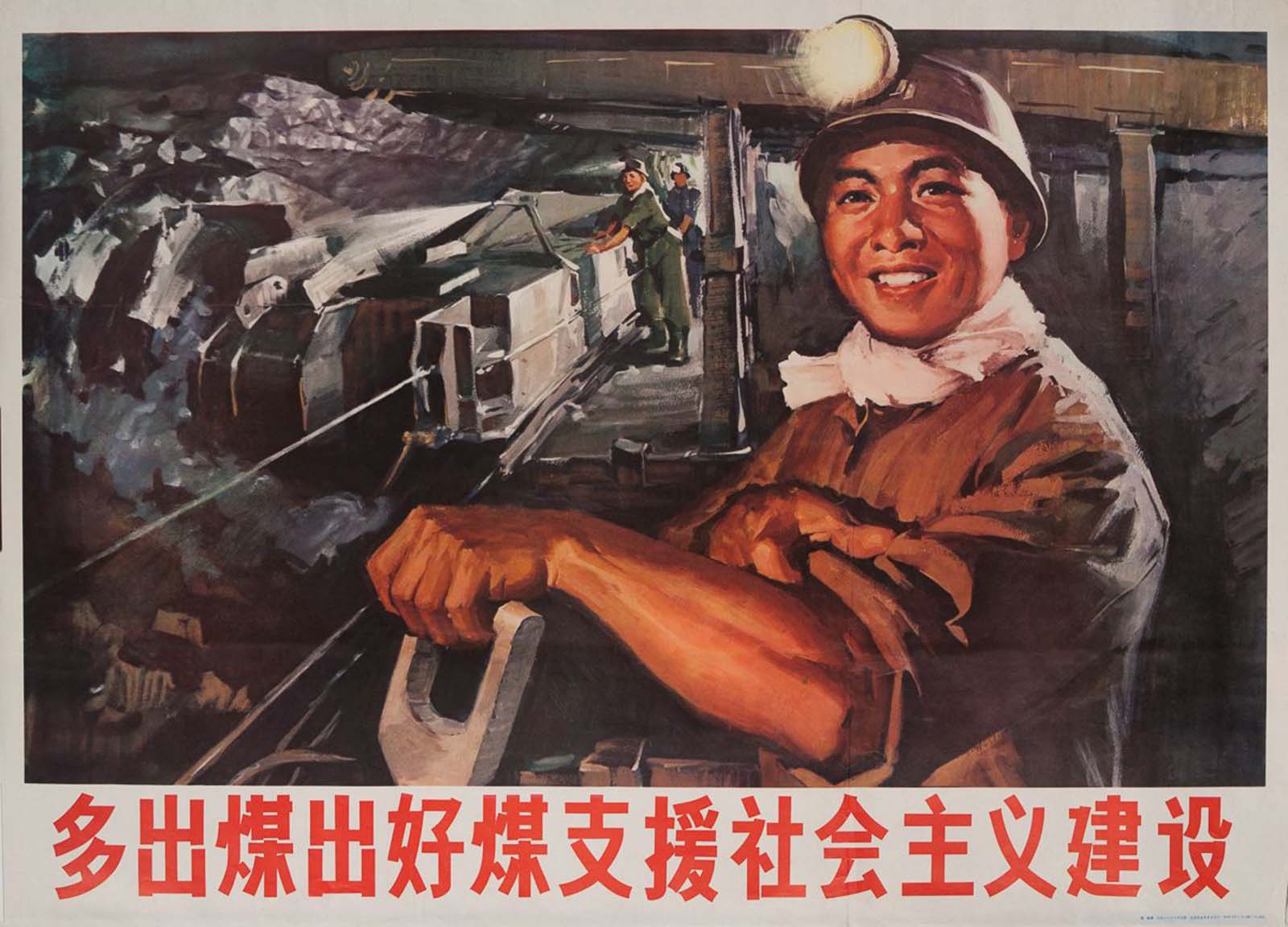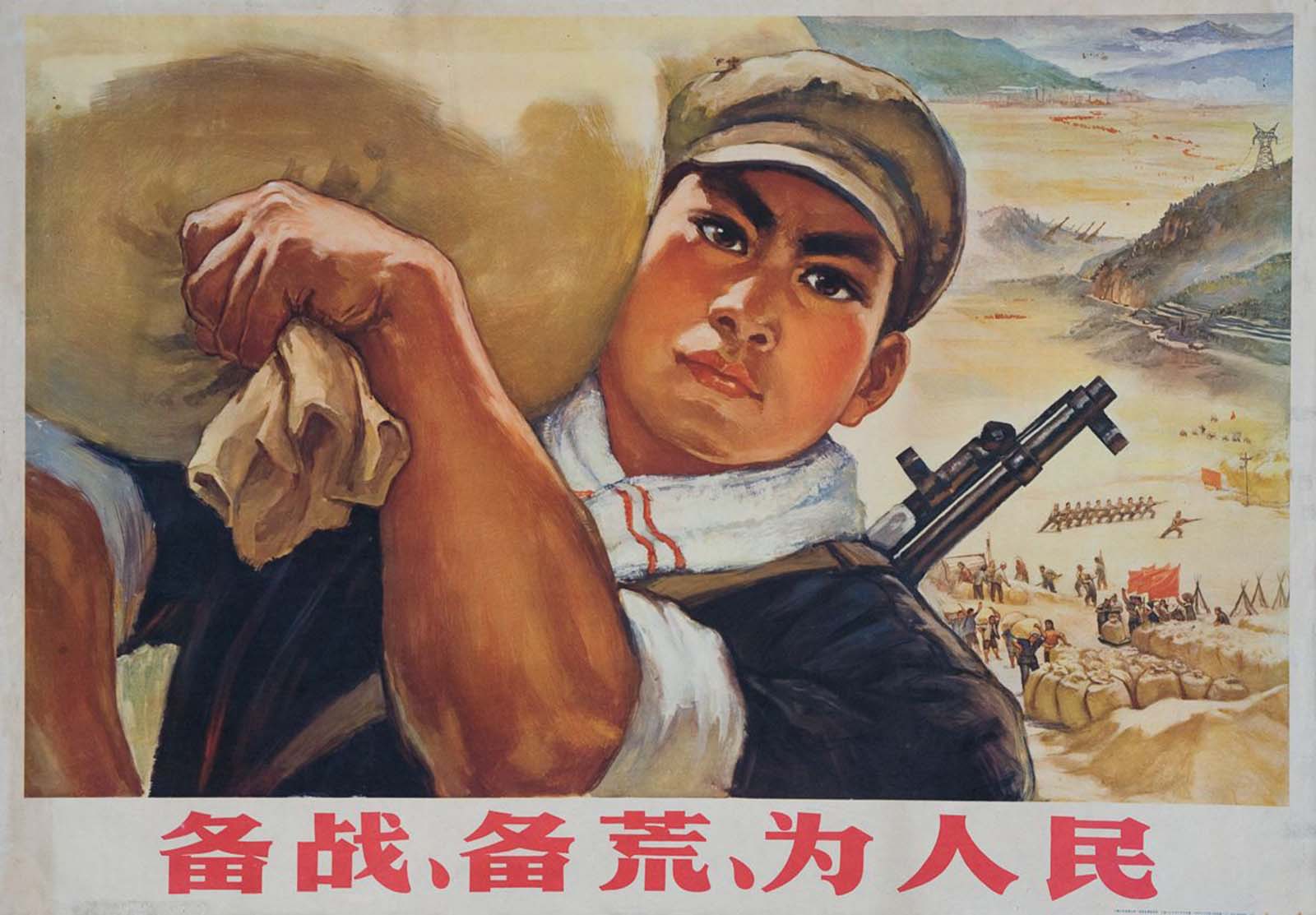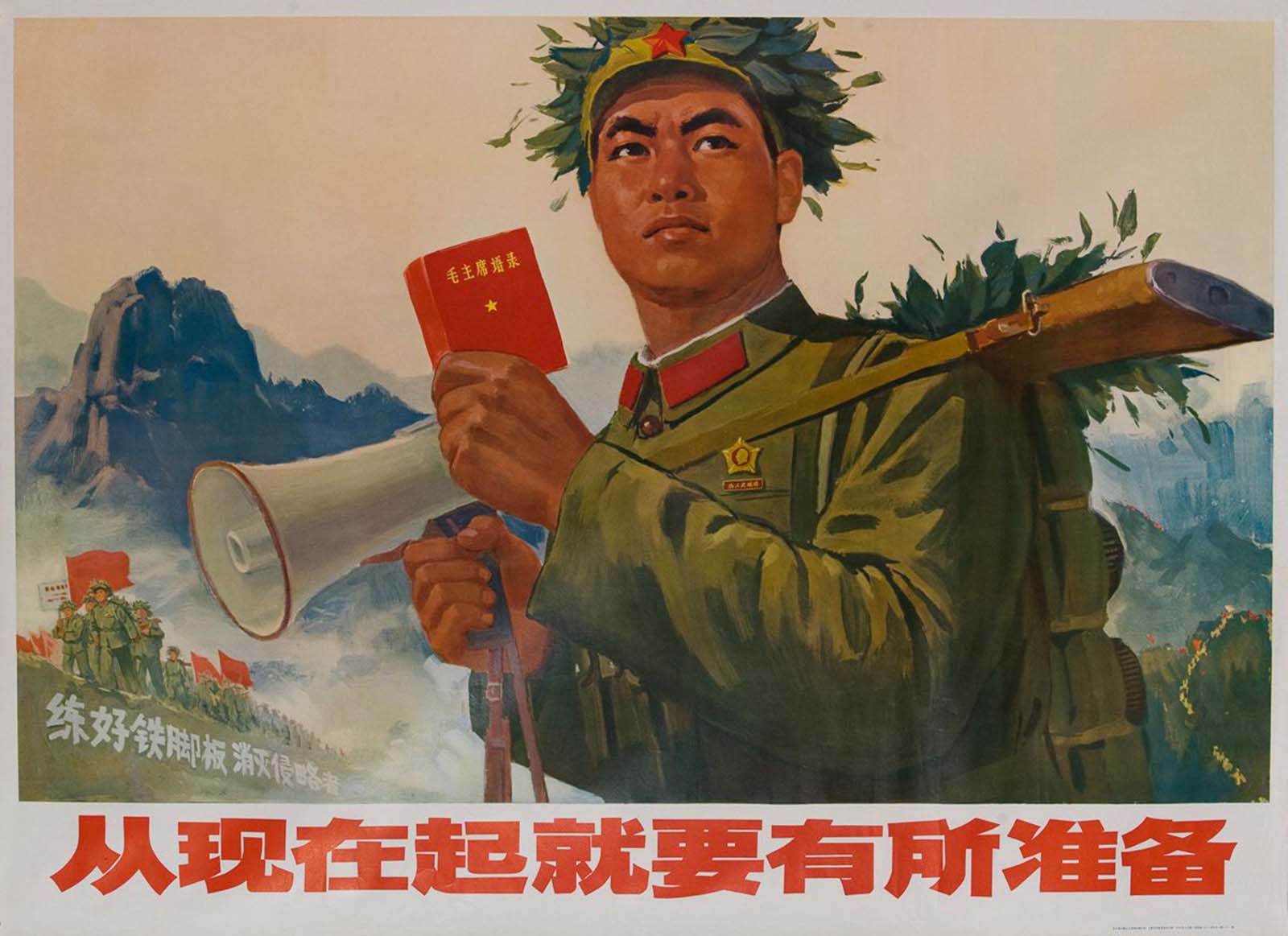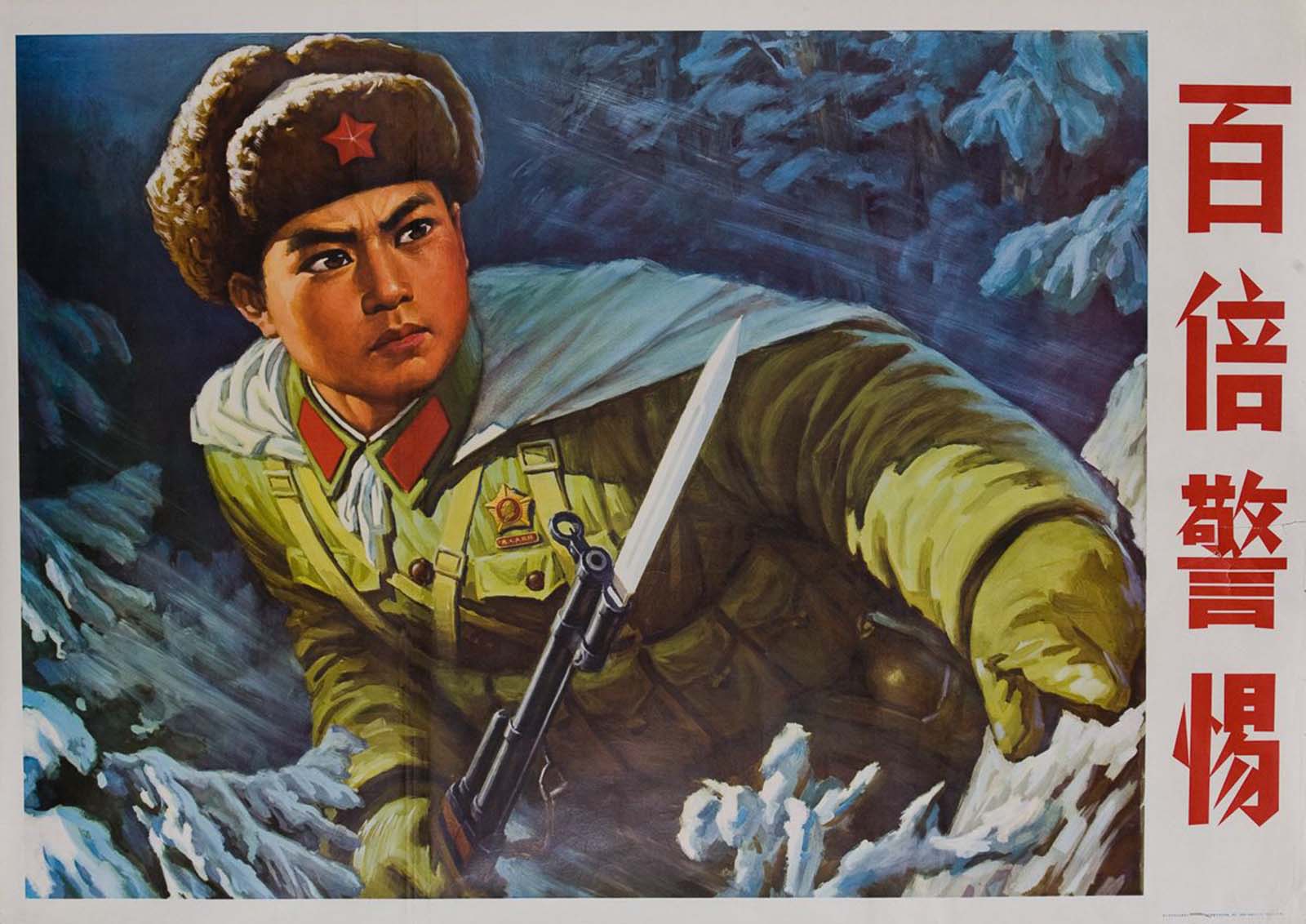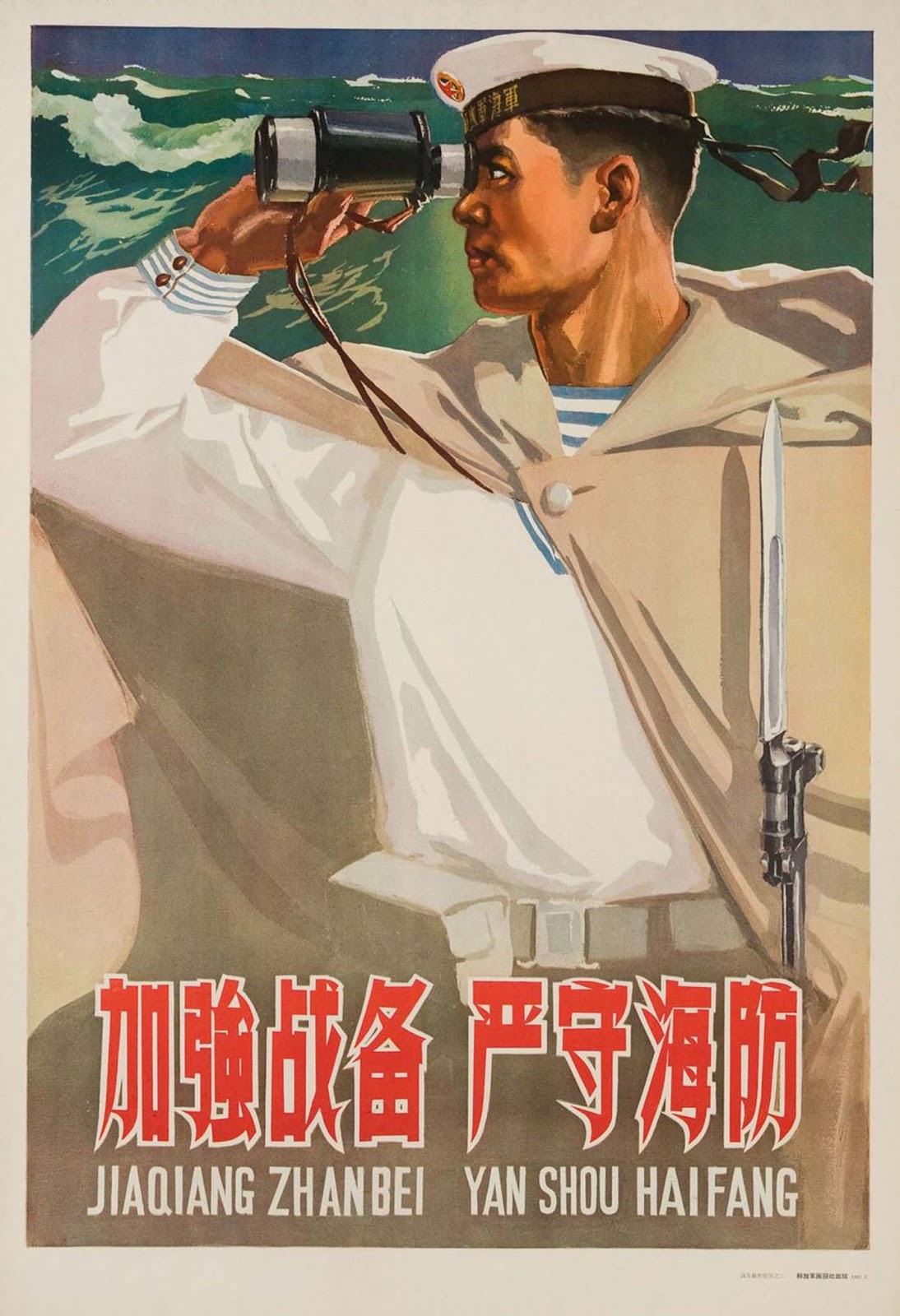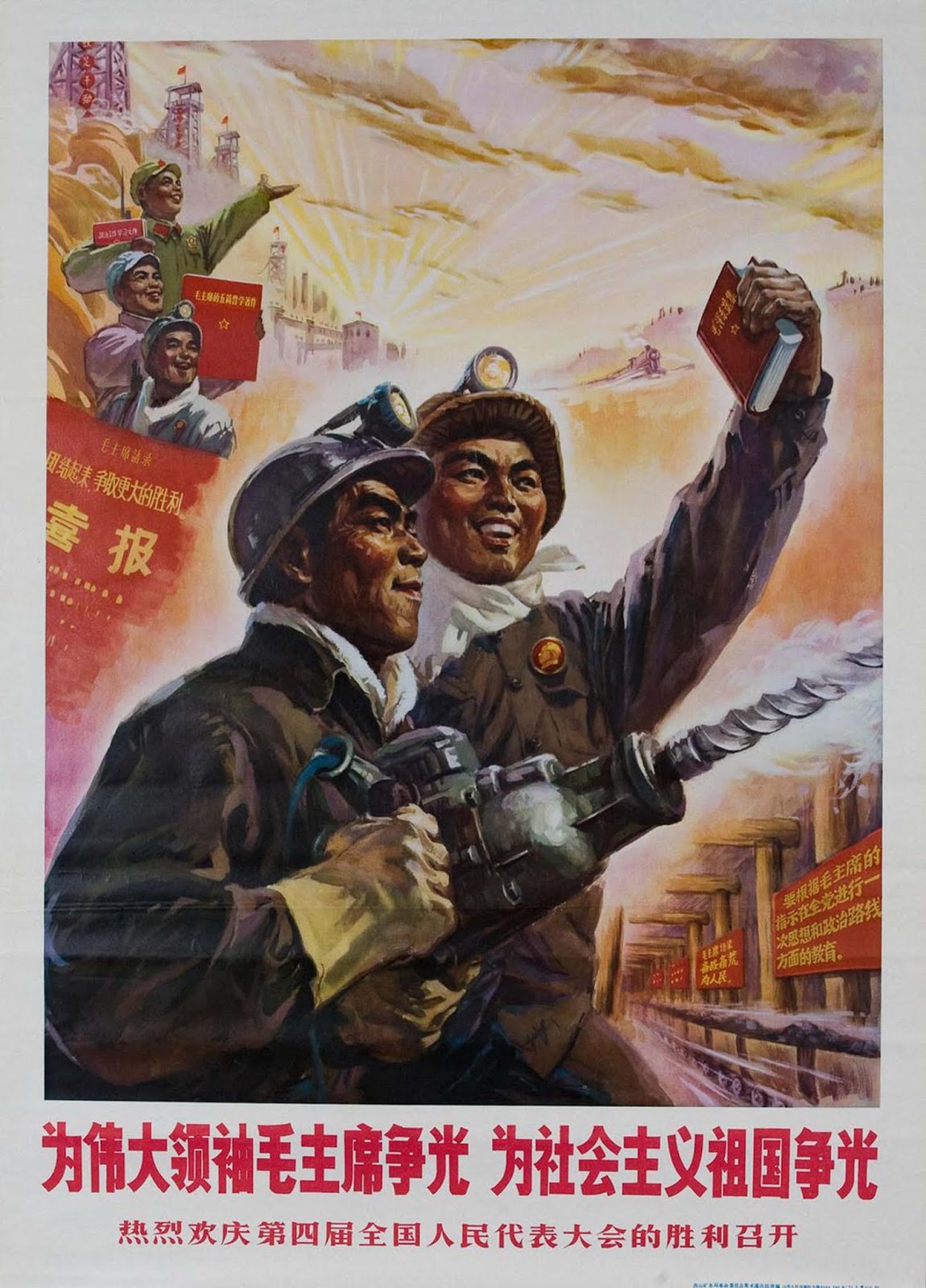Mao called on China’s youth to help him purge capitalist influences and bourgeois thinking in government, teaching, the media, and arts, and to reinvigorate the revolutionary spirit. Calling themselves The Red Guards, radical students set out to destroy the “four olds”: old ideas, customs, habits, and culture. They spearheaded the interrogation, humiliation, and beatings of teachers and intellectuals, and traveled the country destroying cultural heritage. During the Cultural Revolution, traditional artists were condemned as counter-revolutionaries and their work was destroyed. A new style of art was required that supported the Maoist line and served the worker, peasants, and soldiers. The decade was marked by purges and power struggles at the upper echelons of government, and the mobilization of masses of young people to enforce Maoist thought. One of the primary vessels for disseminating instructions and models of behavior was propaganda art. Vivid posters were created to inspire citizens to put forth their labor towards agriculture, industry, and national defense, as well as concerns such as hygiene and family planning. Slogans are often used alongside imagery in posters, usually written in bold, Chinese script. They include pro-revolution messages about “working hard”, “uniting for victory” and “working towards the general communist goal. “Bright” colors are used in many of the posters and red appears a lot as it is the color of communism and revolution. Much of the work that came out of the Cultural Revolution is attributed to committees or groups, rather than individuals. Thousands of copies of the posters were printed and sold cheaply as the establishment at the time wanted the posters to be something that everyone should have on their walls at home. Many of the posters were painted by hand and then printed as lithographs, a process involving using stone, oil, and chemicals to create prints. (Photo credit: David Pollack / Wikimedia Commons / Chinese Archives). Notify me of new posts by email.
Δ Subscribe
